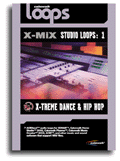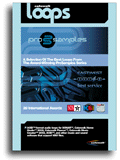The Art of Remixing: Part II
Last updated on 3/31/2016By Jesse Recinos, Cakewalk
Last month in Part 1 we discussed the basic elements of creating remixes, megamixes, and mash-ups. This month we delve into more detail on the specific techniques involved in creating a remix. Even if you don't think that remixing is for you, you should read through this tip to get some fresh production ideas that you can apply to your own songs.
Same Old Song and Dance My Friend.
No matter how many original tunes you write, there often comes a time when you'll want to or be asked to do a remix. Maybe you heard a song on the radio and thought 'I could do better' or maybe it's a song that you really like and that has inspired you to go the extra mile with it. Sometimes you may even take a song from genre like R&B and remix it for a different genre like Drum and Bass or Hip Hop.
Whatever your reasons, the time has never been better to try your hand at remixing. And it's easy for you to get started. You can find licensed audio content in many places on the Web, meaning that all you need are the tools to put your remix together. Using SONAR, Plasma, or any other Cakewalk product that uses Groove Clips, you can easily take a song you've heard a million times on the radio and turn it into something fresh or even something completely unrecognizable.
Getting Started
While all of the elements of your remix don't have to be from the original song, you'll probably want to use some of the more recognizable hooks that make the song catchy. Sometimes taking a normally understated part and bringing it to the forefront can be an effective technique. Vocals, synth leads, rhythmic horns or guitar riffs all make good candidates. Sampling the original drums isn't crucial, in fact drums are typically the first thing replaced in a remix. However, if you like the sound of a particular drum kit, SONAR 2 has a groove sampler called Cyclone DXi that can help you make new beats out of old ones, without having to start from scratch. Cyclone is also a really powerful tool for reconstructing other samples as well. Check out our tech tip on Cyclone DXi for more detail on using it for remixing.
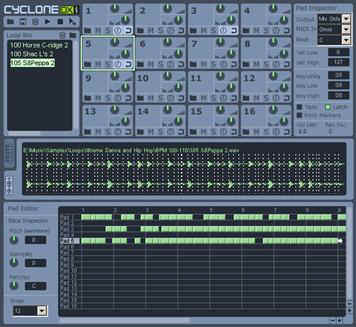
Cyclone is a powerful tool for creating new beats using loops or samples
You can grab sections of tracks from various sources; if you own the CD then you can simply record the track into Cakewalk and then chop up the song, keeping the parts you want. Don't worry about being exact with your editing and don't worry if the instruments aren't as 'isolated' as you'd like, we'll cover that later in the tech tip.
Tip Tidbit 1
When recording songs from CD, Tape, or Vinyl, record the left and right channels of your audio signal as separate mono tracks in Cakewalk. You'll want to do this because the different audio channels often contain slightly different material, which can make selecting and isolating sections much easier.

I Think We're Alone Now
Nothing compares to having isolated tracks if you can get them. Unfortunately it's not always easy to convince the record company to send you the master tapes. (Although you'd be surprised at how easy it can sometimes be if you just ask). Most commercial pop songs are simultaneously released as edits for different radio formats and club remixes in a variety of genres. Because of this, many labels or artists already have their tracks pre-configured to be remixed by DJs. These usually include isolated a cappella tracks (vocals only), key instrumental tracks, and alternate takes or mixes with different content and different production. If you can get a hold of this source material, they are not only a great way to get an idea of where you can go with your remix, but also these isolated tracks can give you some great building blocks to get started.
The web is a great resource
Other sources for remix material are readily available online at places such as Vocal Factory. Also, many forward thinking groups frequently hold remixing competitions and place loops of their tracks online. Getting source material for your remix this way can save you time and energy. Even if you don't like the original track, you can remix the song however you'd like.
Be responsible
Intellectual property rights and copyright infringement are hot topics of discussion these days. There are also many discussions regarding 'sampling' and what should and shouldn't be used without the artist's consent. These topics are way beyond the scope of this article. So please remember to use good judgment and give credit where credit is due.
Here's a good rule of thumb: if the remix is for your own personal use and you do not intend to widely distribute it or sell it as a commercial product, you are pretty much safe in doing whatever you want. If you intend to sell, widely distribute, or benefit commercially from your remix or track that contains sampled material you should be prepared to a) clear the samples or remix with the appropriate sources (record label, artist, publishing company); or b) manipulate those samples beyond recognition. (i.e. make them your own).
Prep Work
OK, you got your loops, samples, and drums. Now you're chomping at the bit to get going, I know.
Taking some extra time now can save you a lot of time later. The collection of sounds before you could be a motley assortment: vocals with drums echoing in the background, loops that don't quite loop perfectly, drums that are dry.you get the picture.
Isolation
Now if you weren't able to find isolated tracks then you'll want to start trying to manually isolate some elements like the vocals. Your isolation work might not be perfect, but once you've combined the clips with the rest of the song, you may never be able to notice. Sometimes the extra artifacts in the background contribute to that elusive je ne se quathat skilled remixers manage to capture.
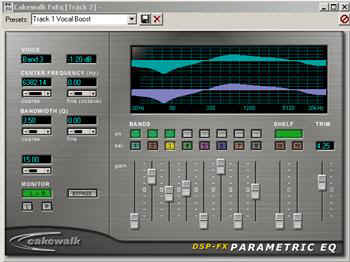
Parametric Eqs are a useful tool for eliminating unwanted frequencies.or instruments.
There are some specialized vocal removing plug-ins out there such as the free AnalogX vocal remover. Most of the time however, using a parametric EQ can give you decent results. When trying to eliminate frequencies, just loop the clip and then begin to play with the bands and db levels of the Parametric EQ. Remember, it's always better to subtract frequencies that you don't want, rather than boost the ones you do. Since you recorded your left and right channels separately, try soloing one at a time to see if one channel has more or less of the elements that you are looking for.
In the pocket
Next, make sure that all of your loops are fitting the groove properly. Double-click the loop in question and Preview it in the Loop Construction View. Make sure that the number of beats setting is correct and that the there are no pops or gaps and the beginning/end of the loop. If there are, just unloop the clip (CTRL-L), zoom in and slip edit the extraneous data. You can then Apply Trimming and re-enable looping (CTRL-L) once you have it right.
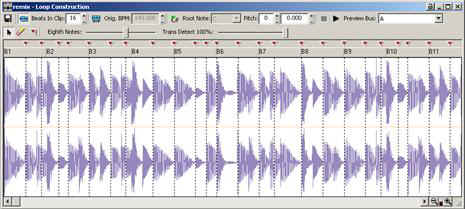
Tip Tidbit 2
If you're looking for something different, try this: Open the Loop Construction View and change the number of beats in the Clip. Halving them should make beats play twice as fast, perfect for a Jungle remix. Doubling them will slow things down for a different groove.

For more information on using the Loop Construction view, read this tech tip.
Fuzzy Logic
Also, you don't have to be too neat. Sometimes a vocal snippet that's been cut too short can put a different emphasis on the clip. Try doing this to transform melodic parts into rhythmic parts. Whether intentional or just lo-fi, this creates a signature sound identifiable in a lot of UK Garage and 2-step. Using SONAR's slip editing makes this an easy experiment to try.
Tidy up
Lastly, make sure that all the clips are relatively noise free, normalized, and equalized so that they all sit well together in the mix.
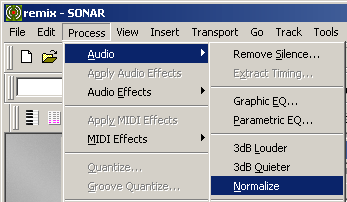
Putting it all together
Now you're ready to get to work. As you've been preparing your samples, you probably have come across a sample or loop that really inspired you. Maybe you looped a vocal line incorrectly but came up with a really catchy take on it or pushed some drums to the point of clipping, creating a cool sound. Whatever it is, get to work before you lose that inspiration. Now that your clips are all normalized and looping properly, nothing should interrupt your workflow as you copy, paste, and roll out those clips.
Add layers to fuel the groove
There may come a point, where the tracks you have created still need some more layers.
ACIDT-format audio loops and samples can also provide the fuel you need for your remix. You can bring in loops from the license-free libraries that ship with Home Studio XL, Plasma, and SONAR 2, and Cakewalk also has a variety of loop CDs available. These loop libraries have been created by top producers in a variety of genres.
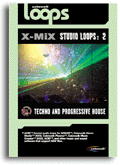 |
You can also create your own tracks using DXi softsynths like Dreamstation, DR-008, and especially Cyclone DXi.
Tip Tidbit 3
When you layer a new drum loop alongside a track that has existing drums, you might find that the bass drums of the two tracks flam or otherwise conflict with each other resulting in a muddy, undefined rhythm. This is an easy thing to fix. Loop and play back the section in question. Patch an EQ onto your original track, then use a High Pass Filter setting to roll off the low end. Start at 40 Hz then gradually move up until the two grooves sit nicely together in the mix.
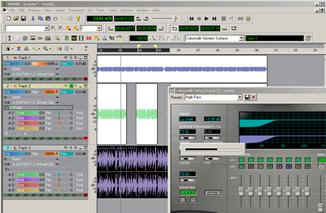
Using FxEq to eliminate the lower frequencies of a drum loop
Finishing Touches
You're almost done. You may have noticed that some of your tracks sound dry compared to those from a CD or record. The key is to emulate those effects found on CD on your own tracks without turning the already processed clips to mud. Here's what to do:
Set up an EQ and Reverb in an Auxiliary Bus (or in multiple busses). Now enable and turn up the sends for all of the tracks that seem a bit dry. Adjust the EQ and Reverb so that all of the tracks fit together and sound like they exist in the same 'space.'
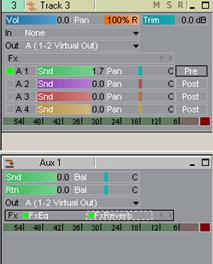
Now What?
Well, you've just created the hottest new remix of the year and you know that everyone would be jumping to it if only they could hear it. While we can't guarantee you a contract, there are plenty of places that you can send your music or post it online so that it can speak for itself. Remember that some samples may have licenses that limit how you use them. Many contests, for example, stipulate that the samples can only be used for entrees into the contest and that you can't make money off of them. Always read the fine print.
We've tried to give you the tools and inspiration you need to create a great remix or add new textures to your original songs. Remember remixing, just like creating music, is an art and there are no rules. Now get creative and have fun!


